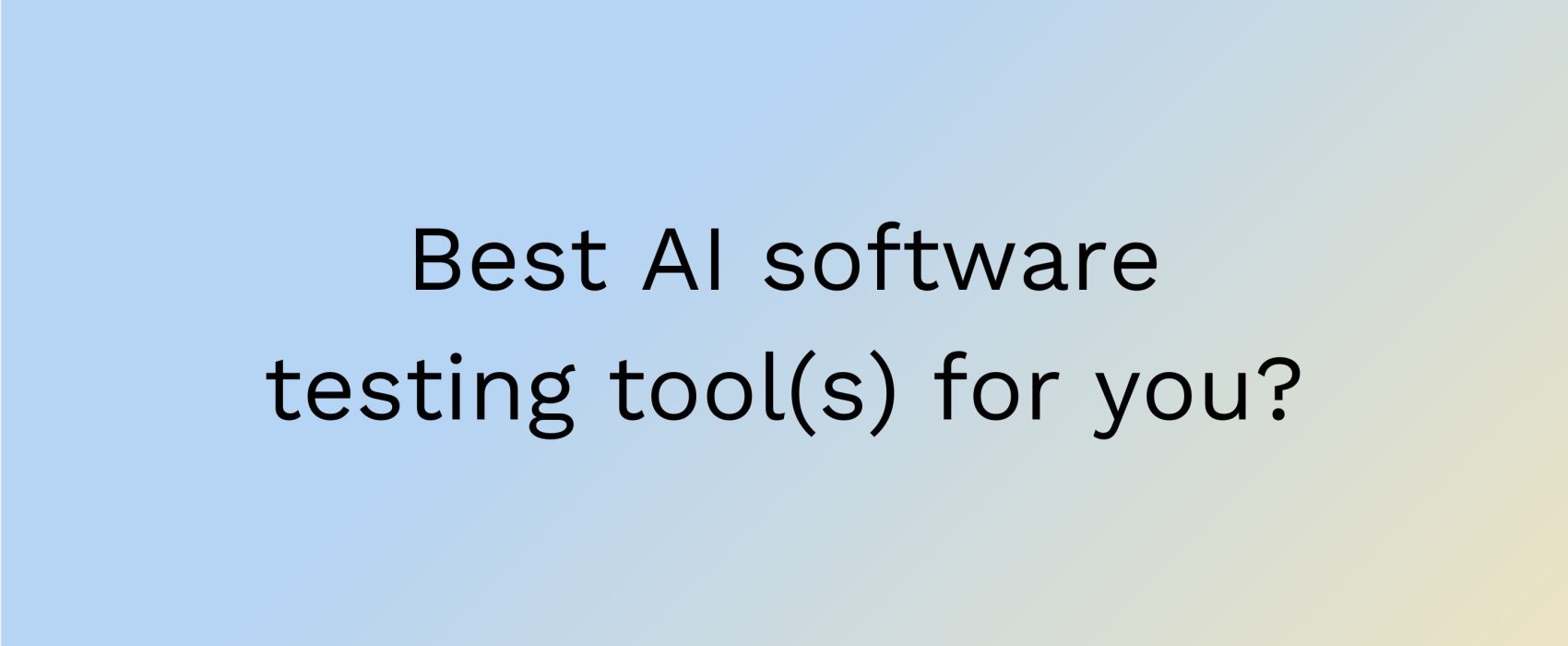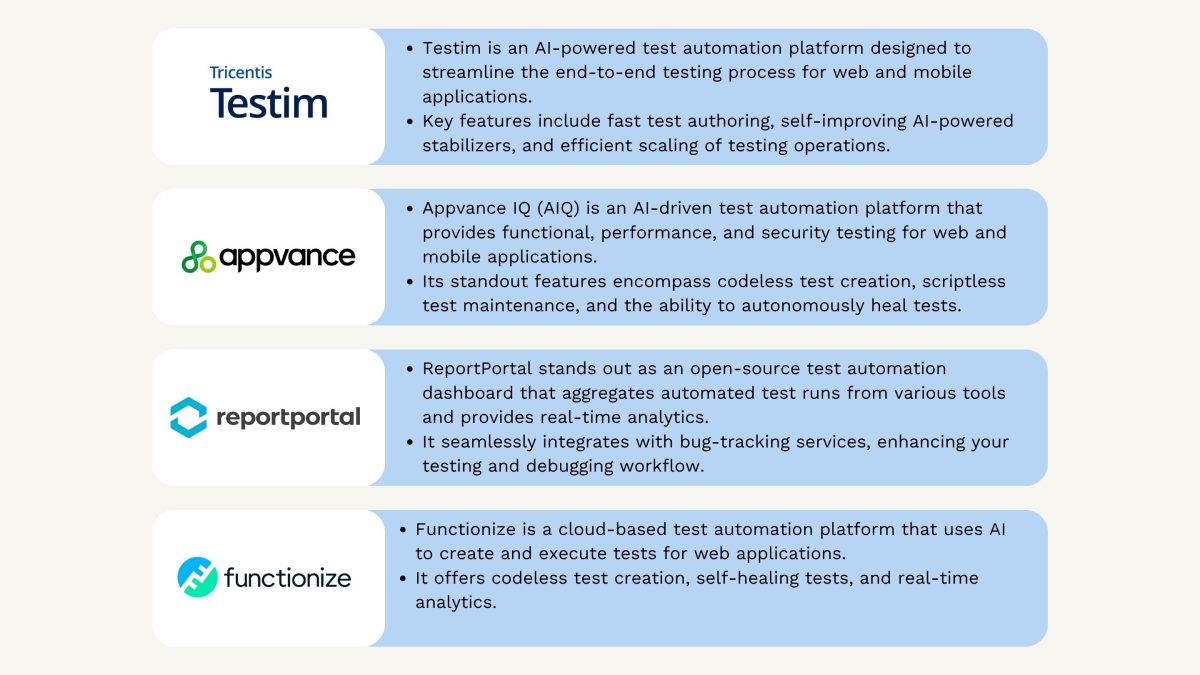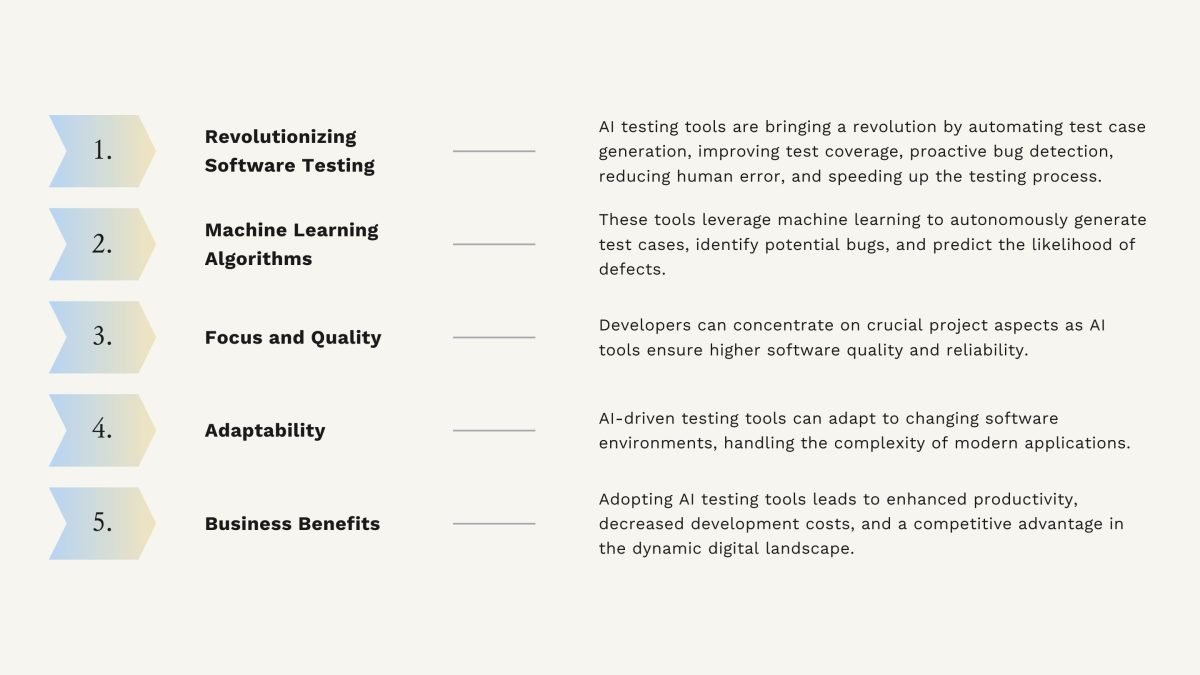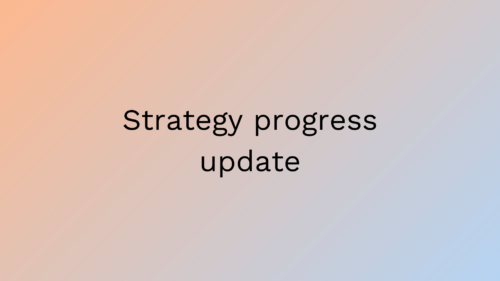How to find the best AI software testing tool(s) for you?
15.11.2023

As AI (Artificial Intelligence) continues to revolutionize industries, it’s crucial to stay ahead of the game. In this article, we’ll explore the world of AI testing tools, how to find them, evaluate them and finally choose the most suitable ones. Also we’ll naturally cover some good options to help you get started.
By leveraging machine learning algorithms and predictive analytics, AI-powered testing tools can help you with test case generation, intelligently prioritize test cases, identify various patterns, and predict potential defects.
This results in reduced human intervention, faster test execution, and the ability to detect issues earlier in the development cycle. Furthermore, these tools can enhance your learning from past test data/results and adaptation, which leads to continuous improvement in test coverage and accuracy.
Identifying the Right AI Testing Tool(s) for Your Project
Choosing the right AI tools for software testing requires careful consideration of several factors. In practise, the process is similar to finding any testing tool; here are some steps to help you make an informed decision:
- Define your testing requirements: Identify the specific testing needs and challenges you are facing. Determine the areas where AI can bring value, such as test case generation and prioritization, defect prediction, anomaly detection, or test data generation. Understand the goals you want to achieve with AI in testing.
- Research available AI tools: Conduct thorough research to identify the AI tools and frameworks available in the market. The market for these tools evolves rapidly so don’t underestimate this. Consider factors such as: features, capabilities, compatibility with your existing testing infrastructure, and user reviews. Look for tools that have a track record of success in addressing similar testing challenges as yours.
- Evaluate tool functionality: Assess the functionality of the AI tools you shortlist. Understand how they integrate into your testing process and whether they align with your requirements. Look for tools that offer a user-friendly interface, ease of integration, and support for the programming languages or platforms you use.
- Consider scalability and performance: Evaluate the scalability and performance aspects of the AI tools. Determine whether they can handle your testing workload and the size of your software projects. Consider factors such as processing speed, memory usage, and the ability to handle large datasets.
- Assess ease of implementation and maintenance: Consider the ease of implementing the AI tools into your existing testing infrastructure. Evaluate the learning curve required for your team to adapt to the tools and how easily they can be maintained and updated. Look for tools that provide good documentation, support, and regular updates.
- Cost and ROI: Consider the cost implications and return on investment (ROI) of the AI tools. Evaluate the pricing models, licensing terms, and the long-term value the tools can provide to your testing efforts. Consider the potential cost savings, productivity improvements, and quality enhancements the tools can bring.
- Proof of concept and trials: Whenever possible, conduct proof of concept (POC) or trial periods with the shortlisted tools. This allows you to evaluate the tools in a real-world scenario and assess their effectiveness in solving your specific testing challenges.
- Seek recommendations and expert opinions: Consult with industry peers, attend conferences, and seek recommendations from experts in the field of AI in testing. Their insights and experiences can provide valuable guidance in choosing the right AI tools.
By following these steps, you can systematically evaluate and select the AI tools that best fit your software testing needs, helping you enhance your testing processes, efficiency, and overall software quality.

Examples of good AI Testing Tools
Top AI testing tools are revolutionizing the software testing landscape, making it easier and more efficient for developers and QA teams to ensure their products perform at an optimal level.
Tools like Testim and Appvance might be worth taking a look at. They utilize machine learning algorithms to accelerate test generation, maintenance, and execution. These solutions enable testers to detect and fix issues faster while reducing human effort.
An example of an AI powered Automation Dashboard; if your team is evaluating a new tool for analyzing and reporting test automation results, Report portal could be one to look at. It’s utilizing machine learning to analyze your test automation failures. Shortly, first you analyze failures manually and after that it starts to find similar patterns from stack traces in next TA runs. On top of that reportportal.io contains lots of other different features, such as real time analytics, visualized dashboards, categorizing of failures and many more. Last but not least, it’s open source.
One more to mention is Functionize, which utilizes millions of data points from you site to create machine learning models (they say the most advanced, accurate and extensible out there) which “adapt with site changes and self-heal tests that would typically otherwise fail”.

Measuring the Impact of AI Testing Tools on Your Product’s Performance
Measuring the impact of AI testing tools on your product’s performance is essential for understanding their true value.
To gauge the effectiveness of AI testing tools, consider factors such as reduced testing time, increased test coverage, and improved accuracy. Analyzing the number of defects found and resolved, compared to the previous time period, can also provide insights into the tool’s efficiency.
Additionally, assess the tool’s ability to adapt to changes in your product and how it contributes to your team’s overall productivity. By tracking and evaluating these key performance indicators, you can make informed decisions on whether to continue investing in your selected AI testing tools.
How AI Testing Tools are Shaping the Future of Software Development
AI testing tools are revolutionizing the software testing landscape by automating test case generation, improving test coverage, enabling proactive bug detection, reducing human error, and significantly accelerating the overall testing process. By leveraging machine learning algorithms, these intelligent tools can autonomously identify potential bugs, and even predict the likelihood of defects in the code.
This not only allows developers and testers to focus on other critical aspects of the project but also ensures that the software is of higher quality and more reliable. Moreover, AI-driven testing tools can adapt to changes in the software environment, making them capable of handling the increasing complexity of modern applications.
As a result, businesses that adopt AI testing tools successfully, can expect enhanced productivity, reduced development costs, and simply better quality software.

Conclusion: Staying Ahead of the Competition with AI Testing Tools
In conclusion, integrating AI testing tools into your development process is a strategic investment that can elevate your productivity and give you a competitive edge, especially if you manage to choose the tools that best fit into your project and situation.
However, while AI tools are valuable, they are not a silver bullet to better quality, at least not yet. They should be used in conjunction with human expertise and traditional testing methods to ensure a well-rounded approach to quality assurance.




